Fabric softener or dryer sheets? That is the question. Do they both do the same thing? Which one is easier to use? What is the difference between dryer sheets and fabric softener?
The main difference between fabric softener and dryer sheets is how they are used. Fabric softener is a liquid. It is added to the washing machine during the final rinse. Dryer sheets are small pieces of fabric coated in stearic acid. They are put into the dryer with the clothing. Both products prevent static and soften the fabric.
In this article, you’ll learn the difference between dryer sheets and fabric softener. Discover how to use them and which one is best for you.
Quick Navigation
Dryer Sheets
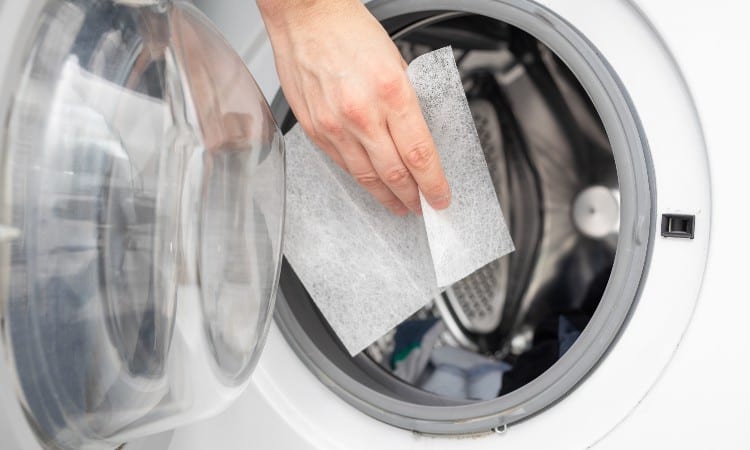
Dryer sheets are pieces of soft, fluffy fabric coated with fabric softeners and fragrances. The fabric is usually polyester or cellulose-based. They are called dryer sheets because they are designed to be used in your dryer.
They are essentially fabric softeners in their own right. They perform the same function as a liquid fabric conditioner, albeit slightly different.
When you put dryer sheets in the dryer with a load of wet laundry, the heat allows the chemicals to escape. One of those chemicals is stearic acid. As the acid melts under the dryer’s heat, it coats the clothing. Making your washing soft to the touch and aromatic.
Better still, dryer sheets help prevent static build-up. So you can avoid getting a shock when you separate your sock from your static-filled sweater.
As the fabric softener is contained within the dryer sheet, there is no mess, accidental spillages, or any need to measure how much to use. All you need to do is check the instructions on the packaging and select the number of sheets for the size of your dryer load.
Although they are easy to use, you have to keep a few things in mind. Try not to overload your dryer, as this will hinder the tumbling motion. If your dryer can’t move the washing around, the dryer sheet is likely to get stuck in one place.
If it does, all the softener and fragrance will be absorbed by one garment, leading to the possibility of oily stains instead of fluffy, fresh-smelling laundry.
Used dryer sheets can be detrimental to dryers. You should always remove the dryer sheet as soon as your dryer has completed its cycle. Leaving it in the machine can block your dryer’s filter. A blocked dryer filter is a potential fire hazard.
When you use dryer sheets you’ll need to regularly maintain your dryer. You should already remove the filter and remove the debris after every use. But, with dryer sheets, you’ll also need to wash the filter at least once a month. This will get rid of any build-up of residue from the sheets.
You might be surprised to learn that dryer sheets can be used for other tasks besides freshening your laundry. Pop one in your gym bag to deodorize it. Or keep one in your shoes to neutralize odors. They can even be used as a duster.
There are some instances where you shouldn’t use dryer sheets. Some fabrics don’t react well to fabric softeners in any form. As softeners tend to leave a coating on the fabric, this can affect the performance of the material. Any special finish, like a flame-resistant coating, will be compromised.
So too, will athleticwear, towels, and microfiber materials. A layer of fabric softener on those fabrics will hinder their ability to absorb moisture.
Pros
- Easy to use – pull out of the box and toss in the dryer
- Can be used between washes as a quick pick-me-up for your garment
- No leaks, spillages, or drips of liquid softener
- Cheaper than fabric softeners
- Reduces static and static cling
- Softens fabric
- Adds fragrance
Cons
- Coats fabric with chemicals
- Effects can be short-lived
- Can reduce the effectiveness of fabric absorbency and special finishes
- Can cause allergic reactions, skin irritation, and an increase in severe asthmatic attacks
- Chemicals can cause environmental damage
- Not reusable
- Will end up at a landfill
Fabric Softener
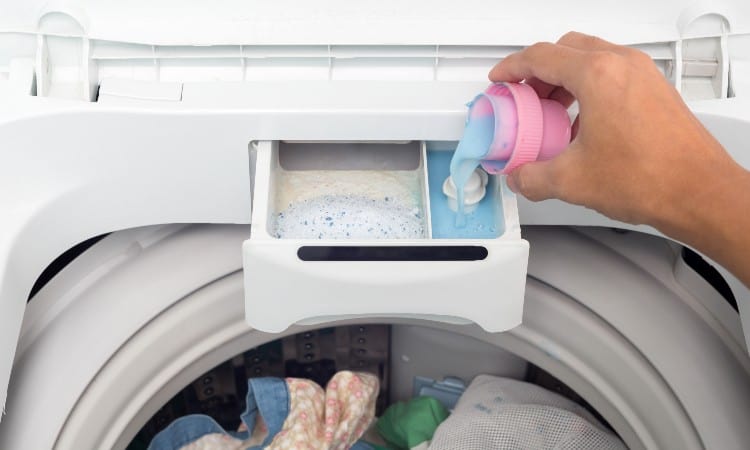
Fabric softener is a liquid you add to the final rinse of your washing machine’s wash cycle. Also known as fabric conditioner, a softener coats the surface of the fabric with conditioning ingredients that protect the fibers from pilling, stretching, and fading.
These ingredients are chemicals that smooth out rough or scratchy fibers making your garments feel super soft and smooth. They also add fragrance and eliminate static. A fabric softener can also combat wrinkles and reduce the time you spend using your iron.
You can also find fabric softeners in solid form, either as a powder or coated onto a dryer sheet. The powder and liquid options need to be used with water, while dryer sheets are used dry.
Powder and liquid softeners are added to the washing machine via the dispenser drawer. They need to go into the fabric softener compartment at the start of the wash cycle, where they will be held until the machine reaches the final rinse. At this point, they are released automatically.
If your machine doesn’t have a fabric softener compartment, you can add the powder manually when your machine reaches the final rinse stage. This is less convenient as you need to be there when your washing machine reaches the right point in its cycle.
Dryer sheets, as we’ve seen in the previous section, are slightly different. They don’t go into the washing machine. You need to put dryer sheets in the dryer. Rather than getting wet, the conditioning ingredients are released by heat.
As fabric softeners and dryer sheets perform the same task, they have the same restrictions regarding their use. You should never use a fabric softener on garments with water-repellent or flame-resistant coatings. It doesn’t matter what form your softener takes.
Nor should you use any style of fabric softener on microfiber fabrics or athleticwear. The layer of softener left on the garments will clog the fibers, reducing the garment’s ability to breathe or wick away moisture.
While you may think adding fabric softener to your towels is a great idea, it’s not something you should do. Softeners work by adding a coating to the surface of a fabric. That coating will stop your towel’s ability to absorb moisture in its tracks.
Having said that, some fabrics are improved by adding a fabric softener. Cotton, for instance, can come out of the wash feeling rough and scratchy, particularly bed sheets and shirts.
Pros
- Reduces static
- Removes wrinkles
- Softens fabric
- Protects against rubbing, fading, and stretching
- Adds a fragrance
- Long lasting results
Cons
- Contains chemicals
- Can cause allergic reactions, skin irritations, and worsen conditions like asthma
- Can be damaging to the environment
- Can reduce the effectiveness of special finishes and fabric absorbency
- Residue build-up can shorten the lifespan of a washing machine
- You have to wash your clothing to use fabric softener
Fabric Softener vs Dryer Sheets: Key Points
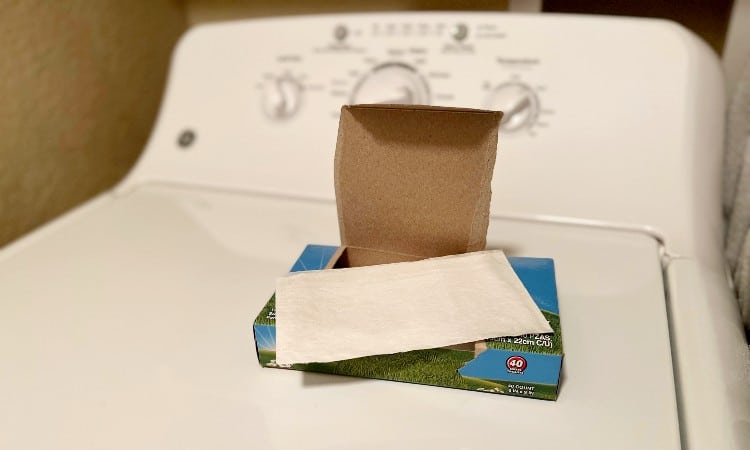
A fabric softener is a product that softens and conditions items made from the material. It can be found as a liquid, a powder, or coated onto small squares of fabric known as dryer sheets.
Liquid and powder versions are designed to be used in the washing machine. This means they are meant to be used wet. It’s this type of softener that we are referring to when using the terms “fabric softener” or “fabric conditioner”.
Although dryer sheets are coated with fabric softening ingredients, they are activated by heat rather than water. To highlight the difference in how they are used, they are called dryer sheets, not fabric softeners. Confusing, I know, but if they were all called fabric softeners, there would be a risk they would all end up in the washing machine.
The main issue there is the heat of the water may not be hot enough to activate the dryer sheet properly, leaving you with a soggy square rag of fabric and washing that hasn’t been softened.
There are other slight differences between dryer sheets and fabric softeners, as well as similar characteristics.
The following table compares fabric softeners to dryer sheets so you can see their properties side-by-side. That way, you’ll be able to figure out which type of fabric softening product you should be using.
| Characteristic | Dryer Sheets | Fabric Softener |
|---|---|---|
| Added Fragrance | Yes | Yes |
| Cost | Cheaper than fabric conditioner | More expensive than dryer sheets |
| Chemicals | Contains chemicals that can be harmful to the environment | Contains chemicals that can be harmful to the environment |
| Health | Can cause skin irritation and worsen conditions like asthma or allergies | Can cause skin irritation and worsen conditions like asthma or allergies |
| Protection for clothing | No protection for fading, pilling, or stretching | Prevents fading, pilling and stretching |
| Softens Fabric | Yes | Yes |
| Wrinkle removal | Occasionally | Every time |
What’s the Difference Between Fabric Softener and Dryer Sheets?
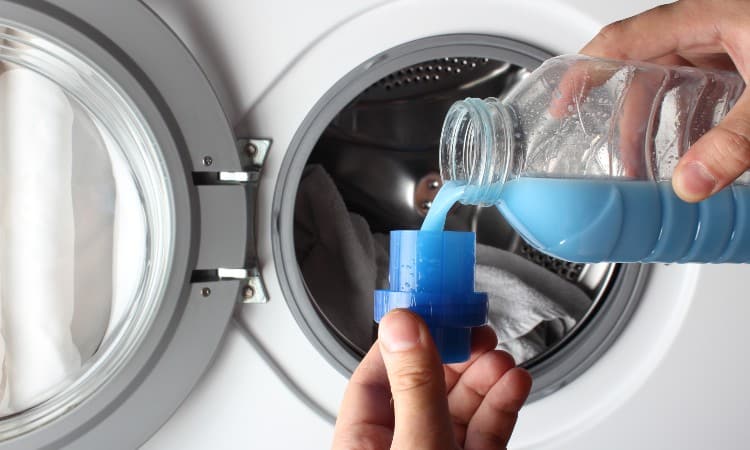
The main difference between fabric softener and dryer sheets is their appearance. Fabric softeners are liquid or powder, and dryer sheets are small squares of fabric.
They also differ in how they are used. While dryer sheets work with the heat of a dryer, a fabric softener needs water to be activated.
Apart from those two significant differences, there isn’t much more to tell them apart. As they both soften and condition clothing, they have more in common with each other than differences.
Added Fragrance
Both dryer sheets and fabric softener will add a fragrance to your washing. From the refreshing aroma of orange blossom to the promise of adventure with an ocean breeze. You can even get the sweet smell of flowers like peonies, roses, or passionfruit.
Due to the way fabric softeners work, the fragrance soaks into the garments as they are rinsed. This may make the fragrance appear to be stronger and it may last longer. Sometimes, especially if the dryer is overloaded, dryer sheets can’t get the scent spread evenly throughout the drum, meaning some clothes may smell fresh while others don’t.
Dryer sheets and fabric softeners don’t always come with the same choice in scent. The fragrance you choose depends on your personal preference. You might find it’s the availability of your favorite scent that steers you towards one product over the other.
Chemicals
Fabric softeners and dryer sheets contain chemicals that condition the fibers in your clothing. Things like Dihydrogenated Tallow Dimethyl Ammonium Chloride. Known as DHTDMAC, for short, it’s a fatty substance that can counteract static. It also provides the softness that fabric conditioners are famous for.
DHTDMAC is from the quaternary ammonium compound family, otherwise called quats. These quats are fats that can be taken from plants or animals. While not all fabric softeners contain animal-based quats, it can be tricky to tell which ones don’t.
Many of the chemicals in fabric softeners are toxic. Formaldehyde is found in some products and is classed as a carcinogen. Even some chemicals used to produce fragrance are known to exacerbate conditions like asthma and irritate your skin.
Then there is stearic acid. Stearic acid is found in dryer sheets. It’s a substance that releases the fabric softener from the dryer sheet when it comes into contact with heat. It works in the same way as DHTDMAC, reducing static and softening clothes.
The only trouble is stearic acid will also coat your dryer and clog your dryer’s filter, leading to a build-up of lint inside the filter and on your garments.
What makes the chemical content in softening products worse is they are always with you. When you wear your clothes or dry yourself with a towel, those chemicals are in contact with your skin and respiratory system.
The chemicals aren’t so great for your clothes either. Or your washing machine and dryer. Residual softener can clog the inner workings of your machine and dryer, leading to costly repair bills.
Anything with a fire or water-resistant coating will be damaged by the chemicals in fabric softeners. That includes garments you don’t necessarily know are treated for fire resistance, like children’s pajamas.
Protection for Clothing
This is one area where there is a large difference between a fabric softener and a dryer sheet. Dryer sheets don’t protect the fabric from fading, pilling, or stretching out of shape, whereas fabric softeners do.
The reason is simple. Fabric softeners can get absorbed into the depths of the fabric fibers. Coating each one and smoothing them out as they swish through the final rinse. This coating holds the fibers together, protecting them from damage.
As dryer sheets are used during the drying process, they can only reach the surface of the material. Although the outer layer of your garment will feel soft to the touch, the inner depths of the fibers will still be prone to damage.
Softens Fabric
The point of fabric softeners and dryer sheets is to get softer clothing. So it’s good that both softening products perform the task brilliantly.
They may work slightly differently, but dryer sheets and fabric softeners are equally effective at making your scratchy cotton sheets smooth and comfortable. How they work may impact how long the effects last, though.
As dryer sheets only work on the surface of the garment, the actual softness you can expect may be short-lived. Fabric softeners can penetrate deeper into the fabric’s fibers, softening them all the way through. Giving more longevity to the soft feel of your clothes.
Wrinkle Removal
Although both dryer sheets and fabric softeners can reduce wrinkles, dryer sheets are a little limited in their effectiveness. It depends on the wrinkles and where they are located.
Light wrinkling or wrinkles without any depth are best for dryer sheets to deal with. This is because dryer sheets only work on the surface of a garment. If the wrinkle is pronounced or your garment is heavily creased, your dryer sheet will struggle. While it may reduce the severity of the wrinkles, you’ll need your iron to get rid of them entirely.
Fabric softeners, on the other hand, are absorbed into the fibers of the fabric and can eliminate wrinkles from the inside out. Smoothing out each yarn relaxes the material and helps creases drop out.
You’ll be less likely to grab your iron if you use a fabric softener in the final rinse. Because it’s easier to spread a liquid out in the water, fabric softener can evenly coat all areas of a garment. While a dryer sheet can only get to the parts, it can reach. This is bad news if your wrinkle is on the opposite side of the garment to your dryer sheet.
Cost
Dryer sheets are less expensive than fabric softeners. As a cheaper alternative, they tackle the job of softening your clothes efficiently and effectively. But, the lower price tag does mean you miss out on some of the benefits a liquid fabric softener can give you.
Although dryer sheets are coated with fabric softening chemicals, they can only condition the surface of your garment. Even then, depending on how balanced your dryer load is, they may not coat all the clothing in there. Dryer sheets are more of a quick pick-me-up for your clothes. A bit like your morning cup of coffee.
Fabric softeners have better coverage and the effects last longer. The softening chemicals get embedded deep into the fibers of your clothes. So it’s more than a surface coating. It’s like a trip to the health spa for your garment. It gets pampered inside and out. That kind of treatment costs money. This is why fabric softeners are more expensive.
Should You Use Fabric Softener or Dryer Sheets?
Fabric softeners and dryer sheets perform the same task. They soften clothes, reduce static, and make your garments smell fresh. The only real difference is how they carry out that task. Whatever you decide to use is ultimately down to your preference and lifestyle.
While fabric softeners in your washing machine will give you a longer-lasting freshness, you do have to wash your garment. That isn’t always convenient, especially if you need your shirt for a night in town.
Dryer sheets can be thrown into a dryer with dry garments. With no need to wash them, you get a quick boost. All you need is the heat from the dryer to freshen up your shirt. The effects are instant.
There is an argument for fabric softener and dryer sheets on hand. You can switch between the two depending on your laundry needs. Don’t be tempted to use them both at the same time, though. That would be overkill, especially if the fragrances clash.
Alternatives to Fabric Softener and Dryer Sheets
It has to be said that fabric softeners and dryer sheets aren’t necessarily good. They can cause allergies, headaches, and skin irritation,, particularly if you have sensitive skin or respiratory problems like asthma.
The chemicals they contain aren’t much better for the environment either. They can have a detrimental effect on your local wildlife and vegetation.
We all like our clothes to be soft, static-free, and free from wrinkles. An extra burst of a refreshing fragrance is a bonus too. But, with your health and the ecosystem at stake, there has to be a better way to achieve comfortable clothing.
The good news is there is. Let’s take a look at some natural remedies for softening your clothes, bedding, and towels.
Baking Soda
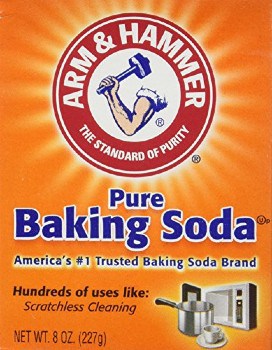 Baking soda is a kitchen staple that is safe to use in standard and high-efficiency washing machines. Not only will it act as a fabric softener, but it can brighten your laundry too.
Baking soda is a kitchen staple that is safe to use in standard and high-efficiency washing machines. Not only will it act as a fabric softener, but it can brighten your laundry too.
This method is only suitable for top-loading washing machines. You need to add the baking soda at the final rinse stage, which means opening the machine. You can’t do that with front-loading machines. The door will be locked. Otherwise, you’d get water all over the floor.
Add ½ cup of baking soda to your washing machine at the rinse cycle. Put it directly into the drum with the clothes, not in the dispenser drawer. Baking soda is a powder and can clog the drawer because it can clump if too much of it gets wet in the same place.
You need to sprinkle it all around the drum while the washing is still sitting in the wash water. Then, close the lid and let the machine finish its cycle.
Distilled White Vinegar
 Another cleaning superhero, distilled white vinegar is a must-have in both your kitchen and laundry room. Distilled white vinegar softens clothes and eliminates static. All without using harsh chemicals.
Another cleaning superhero, distilled white vinegar is a must-have in both your kitchen and laundry room. Distilled white vinegar softens clothes and eliminates static. All without using harsh chemicals.
You can use this method for either top-loading or front-loading washing machines. Add ¼ of a cup of distilled white vinegar to the fabric softener section of the dispenser drawer. The vinegar will be released automatically into the machine at the final rinse stage.
If your machine doesn’t have a dispenser drawer, add the vinegar to the drum manually when your machine reaches the final rinse. All front loading machines have drawers, but you may find some top loaders do not.
There is some concern that the acid in vinegar can eat away the rubber seals and pipes in washing machines. While the jury is still out on the effects vinegar may have on machines, commercial fabric softeners are known to have caused residual build-up in appliances.
To put your mind at rest, you can dissolve a teaspoon of baking soda into the vinegar before adding it to the machine. Baking soda neutralizes the acid. Combining the two products can safeguard your machine and get softer clothes.
Baking Soda and Epsom Salts
So far, we’ve looked at alternatives that don’t add fragrance to your garments. They only soften clothes. For a DIY fabric softener with an aroma, you’ll need to combine baking soda with Epsom salts.
Mix two cups of Epsom salts with ½ cup of baking soda. Then, top it off with 35-40 drops of your favorite essential oil. Make sure it is mixed well. When it’s ready, add two tablespoons to the final rinse stage.
Again, as this option involves undiluted baking soda, it will be solid. Don’t put it in your dispenser drawer. It might clump and cause clogs. This one is for top-loading washing machines only.
What Are Dryer Balls?
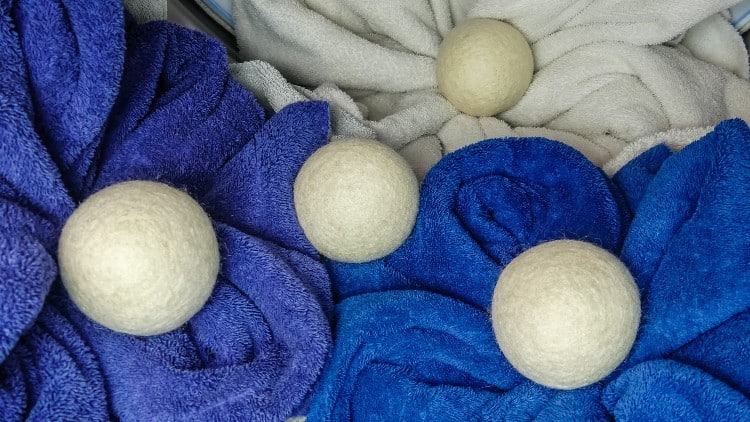
Dryer balls are an affordable alternative to fabric softener and dryer sheets. Made from wool or plastic, they are balls you put in the dryer with a wet load of laundry. About the same size as a tennis ball, they reduce static cling, soften fabric, and remove lint.
Safe to use, non-toxic, and reusable, they are better for you and your environment. That’s not all. They can also reduce drying time which can save on electric bills. Making dryer balls better for your wallet too.
They work with the tumbling motion of the dryer as it spins. Their size and shape keep clothing apart, preventing tangling or rubbing. Although they don’t add artificial fragrance, they can help lessen the risk of bobbling or pilling.
Although there is an initial outlay to purchase the dryer balls, they are reasonably priced and can be used over and over again. Making dryer balls is a long-time investment for softer laundry.
Conclusion
Fabric softeners and dryer sheets are essentially the same things. They are just used in different ways.
Dryer sheets work with the heat of your dryer and offer a quick boost of freshness to your clothes, while fabric softeners go in the final rinse of your washing machine, providing a longer-lasting fragrance.
Have you used dryer sheets or fabric softeners? Which one do you prefer? Let me know in the comments.